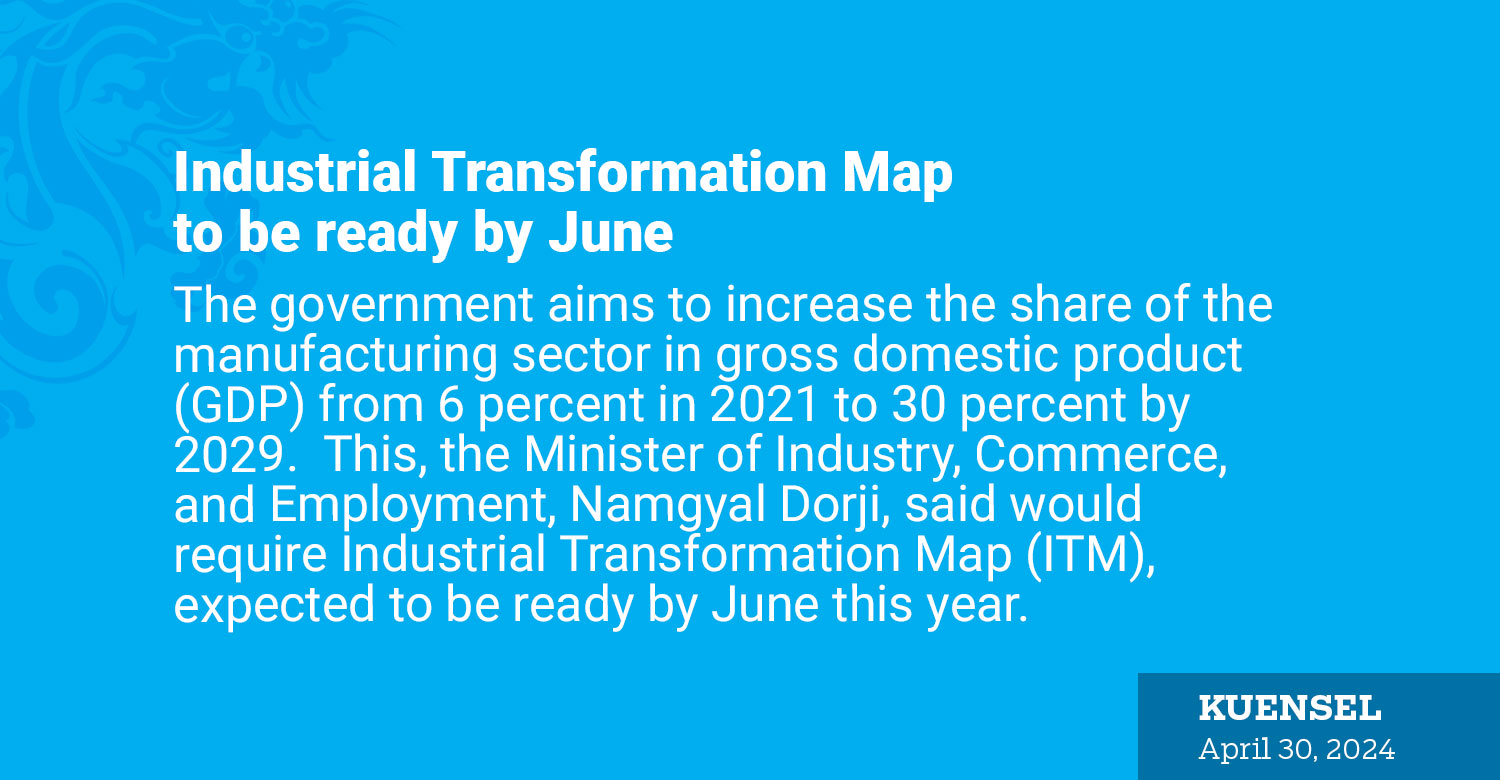
The government aims to increase the share of the manufacturing sector in gross domestic product (GDP) from 6 percent in 2021 to 30 percent by 2029. This, the Minister of Industry, Commerce, and Employment, Namgyal Dorji, said would require Industrial Transformation Map (ITM), expected to be ready by June this year.
The manufacturing sector’s share in GDP has been declining over the years. The sector’s share in GDP declined from 8.93 percent or Nu 6.32 billion in 2010 to 6.73 percent or Nu 19.88 billion in 2022.
The sector’s share in GDP, which was 9.06 percent in 2012, saw a decrease to 7.51 percent in 2017 and 5.86 percent or Nu 11 billion in 2021, according to the National Accounts Statistics.
Lyonpo said that the ITM exercise was a work in progress where experts are gathering various industry-related information and data required for the ITM framework.
“Industry surveys, stakeholder consultation, and analysis will need to be carried out and ITMs for three priority sectors will be developed by June 2024,” he said, adding that the interventions and support measures required will be known only after the completion of the ITM exercise.
According to Lyonpo, the ministry initiated the development of the ITM with the support of the United Nations Development Programme to come up with a medium to long-term industrial strategy focused on key priority sectors, based on comparative and competitive advantages, among others.
“The intent is to develop sector-specific strategies (for prioritised sectors) to improve productivity, coordination and collaboration, partnership with the private sector and guide us in our effort to become a high-income country driven by innovation and technology by 2034,” he added.
The government plans to boost the manufacturing sector by developing infrastructure with amenities for industrial development, integrated single window online platform to access services by the private sector (Integrated Business Licensing System), and manufacturing as one of the priority sectors for the Economic Stimulus Plan.
Lyonpo said that the government would focus on industries that have growth potential for export, generating employment, and potential for value-addition of locally available raw materials.
When asked about the government’s plan to establish silicon chip and graphite battery industries, as mentioned by the former government, he said that the focus at the moment was to facilitate and support existing industries to navigate the challenges.
However, Lyonpo said that the study would be needed to support any new innovative ideas that will benefit the economy to grow.
He added that the government’s role in the private sector development is to improve the efficiency of the business to remain relevant and competitive in the market unless the causes of inefficiencies are due to policy-related regimes.












